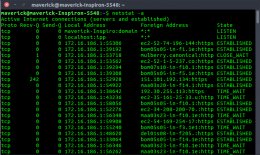Post by RichmondPost by AioeAfter about two hours offline, the server resumed working as usual.
The news server and website are online and everything seems to be
working fine.
Please, if you notice any abnormal server behavior warn me: the
upgrade was extensive and complex, I may have missed some bugs.
I've been noticing the server is often 'offline' in gnus. It comes
online again if I open it.
Modern news servers use volatile connections.
In the old days, you might remember telnetting to port 119
and doing stuff manually.
That worked, because the connection was "persistent".
A discrete "exit" in Telnet, might cause the connection
to drop. Or, perhaps the connection would drop after
fifteen minutes of inactivity (like some FTP used to).
On a modern news server, the server drops the connection
maybe a few seconds after client activity stops. This allows
the news server connection table, to support ten times
as many customers, while using volatile connections.
It also means, that (semi) modern clients of USENET, the
software is pretty well continuously logging in again and
opening new connections, to give the "impression of being
connected". when the connections are at "machine speed" and
not "human speed".
As a consequence, if you carried out the telnet blah.com 119
test today, you would be sorely disappointed in what happens
next.
Any older client, with a different view of the world, may think
it's "sitting on a connection", when in fact, it isn't. The
mismatch between the new behavior on the server, and the old
expectations on the client, can lead to some weird notifications
in the client.
Check and see if perhaps GNUS suffers from this condition.
*******
On Windows, a user can use TCPView to watch connections established
and torn down.
Loading Image...
And since that's just a copy of the "netstat" idea from elsewhere,
maybe a "netstat viewer" would work on Linux or the like.
Loading Image...
There should be a way to observe how quickly the connections
on GNUS drop on you.
*******
Free newsservers usually have a limit of "connection minutes per day"
or "connections made per day", and occasionally a person using some
ancient software, will manage to exceed the daily quota and get
kicked to the curb (disconnected for the rest of the day) as
a form of warning about excessive resource utilization. On the
modern news server, you're only supposed to be connected for
the duration of a transaction, and after that, you politely
leave. Whereas in the old days, it would be popular for the
"connection to stay up, all day long". Perhaps an older client,
does not even have the common sense to automatically log in
again, after the connection drops.
Paul